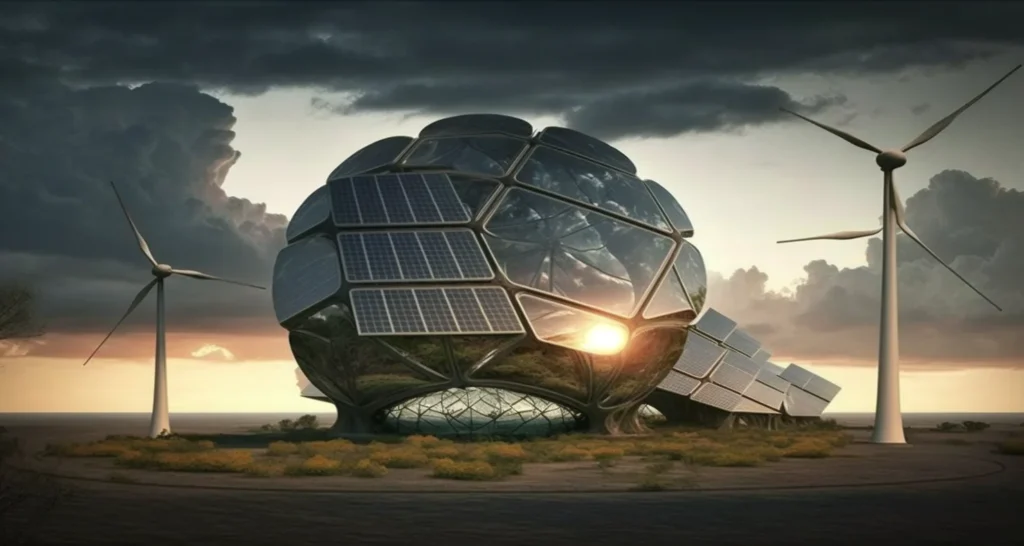In a world grappling with the challenges of climate change and energy security, India has embarked on a resolute journey towards a renewable and sustainable future. With a population of over 1.3 billion, the country’s efforts to transition to renewable energy sources and implement cutting-edge energy storage solutions are not only significant for its own progress but also hold global implications. In this article, we delve into India’s transformative course, focusing on its strides in renewable energy expansion and the pivotal role of energy storage.
Embracing Renewable Energy at Scale:
India’s commitment to renewable energy is evident through its ambitious targets. The nation has set its sights on achieving 175 GW of renewable energy capacity by 2022 and an even more ambitious goal of 450 GW by 2030. This expansion encompasses a diverse mix of renewable sources including solar, wind, hydro, and bioenergy, all of which play an essential role in reducing India’s carbon footprint and ensuring energy security.

Solar Power Illuminates the Future:
India’s solar energy journey has been particularly remarkable. With abundant sunlight across most of its regions, solar power has gained prominence as a game-changer in the nation’s energy landscape. From rooftop solar installations to massive solar parks, India has embraced photovoltaic technology at various scales. The International Solar Alliance (ISA), initiated by India, underscores the country’s global leadership in fostering solar collaboration and technology development.
Harvesting Wind Energy:
Wind energy forms another critical pillar of India’s renewable expansion. The country’s extensive coastline presents an opportunity for offshore wind farms, while onshore wind projects continue to contribute significantly to the energy mix. Leveraging advancements in wind turbine technology and policies, India is harnessing the power of the wind to generate clean and sustainable electricity.
Elevating Energy Storage to New Heights:
As renewable energy sources are intermittent in nature, energy storage solutions emerge as the linchpin in India’s transition to a sustainable energy future. By capturing surplus energy during peak generation and releasing it during periods of low production, energy storage technologies ensure a consistent power supply and help stabilize the grid. India is actively exploring battery storage, pumped hydro storage, and other innovative solutions to address this crucial challenge.
Innovative Energy Storage Approaches:
India’s efforts in energy storage innovation are noteworthy. Large-scale battery storage installations are being piloted to integrate with solar and wind farms, enhancing the reliability of renewable power sources. Pumped hydro storage, utilizing the potential energy of water, is another promising avenue that helps balance supply and demand. These innovations underline India’s commitment to maximizing the utilization of renewable energy and minimizing reliance on fossil fuels.
Overcoming Challenges and Envisioning the Future:
While India’s renewable energy journey is inspiring, challenges such as financing, grid integration, and regulatory frameworks persist. The integration of renewable energy into the national grid requires careful planning and modernization to ensure smooth transitions and prevent power imbalances. To this end, policy support, technological innovation, and collaboration with the private sector are crucial.

By 2025, renewable energy could be cheaper than fossil-fired power in most parts of the world. That seems to be the broad consensus emerging on the back of plummeting costs, rising efficiencies, and increasingly competitive LCOEs of renewable power systems. With renewable power finally hitting the cost and efficiency scores required for more active participation in national electricity grids, wind and solar forecast to account for 48 percent of global installed capacity and 34 percent of the power generated by 2040. And China and India are expected to be at the vanguard of this revolution in the power sector.
The world’s largest renewable capacity expansion program is already underway in India. The program is expected to add 175 GW of renewable power – 100 GW from solar, 60 GW from wind, 10 GW from biomass, and 5 GW from small hydro-power – to the country’s energy grid by the year 2022. By 2040, renewables are targeted to account for a 40 percent share of installed capacity, up from the current 18 percent.
The country’s renewable energy sector seems on track to deliver to that aggressive ambition.
The Indian wind industry is currently the fourth largest in the world with installations of over 31 GW. As per 2016 figures, wind power accounts for around 57 percent of installed capacity among renewables and around 9 percent of total domestic capacity. Over 80 percent of the current installed capacity is shared among six companies which include local players like Suzlon, WindWorld, ReGen, and Inox Wind as well as international brands like Gamesa and Vestas.
The Indian solar sector is now home to the largest solar power plant in the world. It is also on its way to becoming the third-largest solar market in the world with the addition of 8.8 GW capacity this year. But the domestic solar energy industry is currently under intense pressure from overseas competition.
The benefits of India’s aggressive solar push have thus far benefited overseas manufacturers more than the local industry. According to one study, almost 85 percent of the country’s solar module demand, valued at $2 billion, has been serviced by Chinese products that are up to 20 percent cheaper than locally produced solutions. Moreover, a Domestic Content Requirement policy framework set up to support the domestic industry has been deemed by the WTO to be anti-competitive. One consultancy estimates that very few of the over 110 domestic solar cell and module makers will survive if the current trend continues. India has already initiated an anti-dumping investigation following a petition by the Indian Solar Manufacturers Association.
The biggest challenge, however, will be the frictionless integration of large-scale renewable energy into a grid system comprising inflexible baseload coal plants. Without efficient grid management, the addition of these variable renewable energy sources can result in systemically inefficient levels of curtailment.
By some accounts, the curtailment rate, the amount of renewable energy that goes to waste because of grid limitations, in some parts of the country has already hit unsustainable highs. For instance in Tamilnadu, the country leader in installed solar capacity, the curtailment rate is estimated to be anywhere between 33 to 50 percent. So unless the transmission and distribution systems, both at the national as well as the state level, a lot of the potential value of renewable investments will be lost.
The government has already put forth a compensation mechanism for existing renewable projects to protect their cash flows from grid curtailments and to ensure a favorable operational environment.

A recently released study, led by the U.S. Department of Energy’s National Renewable Energy Laboratory (NREL), the Ministry of Power, and USAID, has confirmed the technical and economic viability of integrating 175 gigawatts (GW) of renewable energy into India’s grid with minimal curtailment. The study concluded that India’s coal-dominated system had the flexibility to accommodate the variability and intermittency of renewable energy. There were, however, two key points that were emphasized. One, a nationwide integration of renewable energy would require regional coordination in scheduling and dispatch in order to realize cost efficiencies, streamline variability and increase systemic flexibility. And two, operational changes in coal-dominated regions would enhance the quality of a nationwide integration.
The government has launched a Green Corridor program that would address these integration challenges. The program would improve linkages between regional grids and the national grid and streamline the flow of power from high renewable energy installation states to other parts of the country.
Every large-scale deployment of renewable energy will have to be backed by a robust energy storage strategy. Energy storage technologies help cut curtailment and balance the variability of renewable power by storing and releasing energy based on demand patterns. They play a critical role in enhancing the reliability, flexibility, and stability of entire grid systems.
India’s first grid-scale storage system was announced earlier this year as a partnership between Mitsubishi and U.S. energy storage company AES. The 10 MW project, to be operated by Tata Power Delhi Distribution, is designed to demonstrate peak load management, increase system flexibility, and support reliability.
As with renewable energy, India and China are expected to lead the market in installed storage capacity, of which Bloomberg New Energy Finance predicts there will be 45 GW worldwide by 2024. China has already announced a fifteen-year Energy Technology Innovation Action Plan to develop advanced energy storage solutions for renewable integration, microgrid development, and electric vehicles. The Indian government needs to have a proactive policy for energy storage development especially considering the country does not have too much gas-based power generation to balance the grid. India has already built adequate momentum towards realizing its ambitious renewable energy mission. The country now needs to create the appropriate policy and investment frameworks that would enable local industry, streamline renewable integration, and create the storage infrastructure required to make renewable energy a true success
Conclusion:
India’s roadmap to a renewable and sustainable future is a testament to its dedication to global environmental stewardship and energy security. The nation’s steadfast commitment to expanding renewable energy capacity and embracing energy storage technologies is setting an example for nations around the world. As India navigates the path towards a greener horizon, its journey serves as both a beacon of hope and a blueprint for a more sustainable and harmonious coexistence with the planet’s resources.













